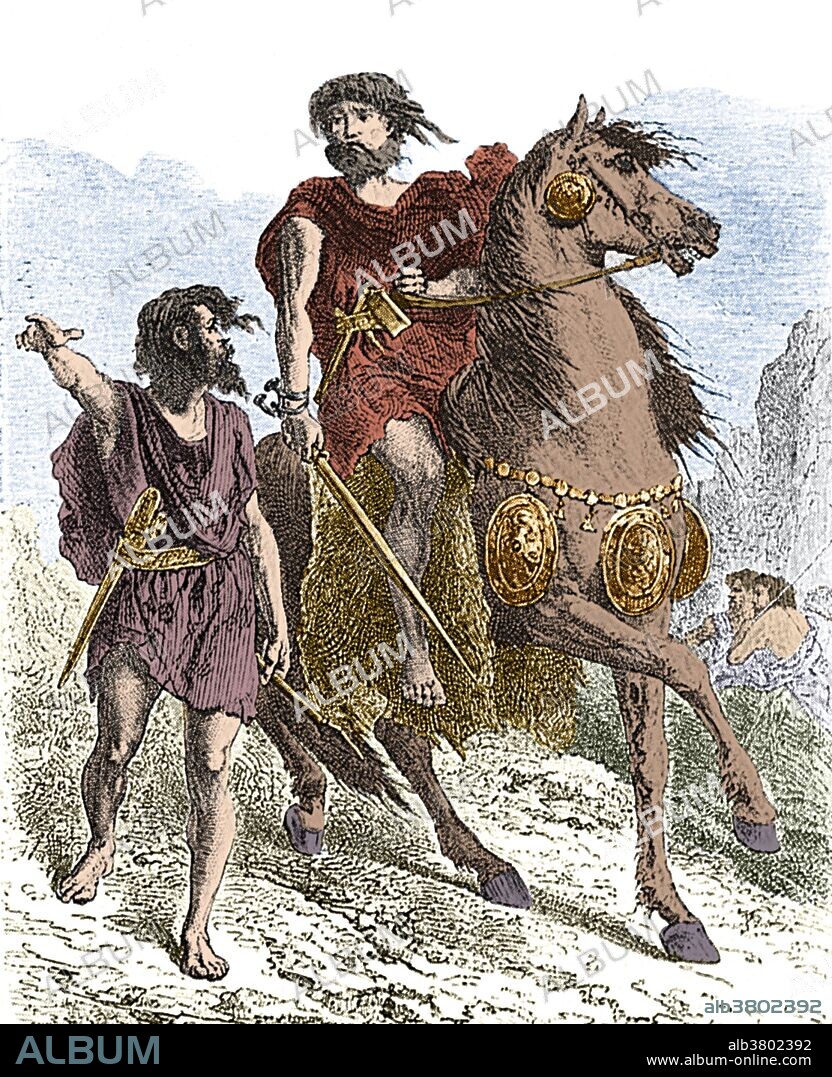alb3802392
Prehistoric Man, Bronze Age Warrior

|
Añadir a otro lightbox |
|
Añadir a otro lightbox |



¿Ya tienes cuenta? Iniciar sesión
¿No tienes cuenta? Regístrate
Compra esta imagen

Título:
Prehistoric Man, Bronze Age Warrior
Descripción:
Ver traducción automática
Colorized illustration of a bronze age warrior. Bronze age warriors were the first knights. Horseback riding became widespread in the late Bronze Age and the men used slashing swords for fighting. The Bronze Age is a period characterized by the use of copper and its alloy bronze as the chief hard materials in the manufacture of some implements and weapons. Chronologically, it stands between the Stone Age and Iron Age. Humans learned how to smelt, melt, cast, rivet, and to forge copper and bronze. Bronze Age swords appear from around the 17th century BC, in the Black Sea region and the Aegean, evolving out of the dagger. They are replaced by the Iron Age sword during the early part of the 1st millennium BC. Bronze Age swords were strong, but not brittle. They would bend, rather than break, in battle. The blades were shaped as to get the maximum strength out of the material, while still affording balance and cutting/thrusting ability.
Crédito:
Album / Science Source
Autorizaciones:
Modelo: No - Propiedad: No
¿Preguntas relacionadas con los derechos?
¿Preguntas relacionadas con los derechos?
Tamaño imagen:
2958 x 3640 px | 30.8 MB
Tamaño impresión:
25.0 x 30.8 cm | 9.9 x 12.1 in (300 dpi)
Palabras clave:
A CABALLO • ANTROPOLOGIA • ARMA • ARMAS • ARTE • CAVERNICOLA • COLOREADA • DIBUJO • EDAD BRONCE • EDAD DE BRONCE • ESPADA DE BRONCE • ESPADA • ESPECIE HUMANA • EVOLUCION HUMANA • EVOLUCION • EVOLUCIONISTA • EXTINGUIDO • HISTORIA • HISTORICO • HOMBRE PRIMITIVO • HOMBRE • HOMBRES • ILUSTRACION • JINETE • LEGENDARIO • MASCULINO • MAYOR • MEJORA • OBRA DE ARTE • PALEONTOLOGIA • PREHISTORIA • PREHISTORICO • RETRATO DE HOMBRE • SOLDADO • WEAPON
 Pinterest
Pinterest Twitter
Twitter Facebook
Facebook Copiar enlace
Copiar enlace Email
Email
